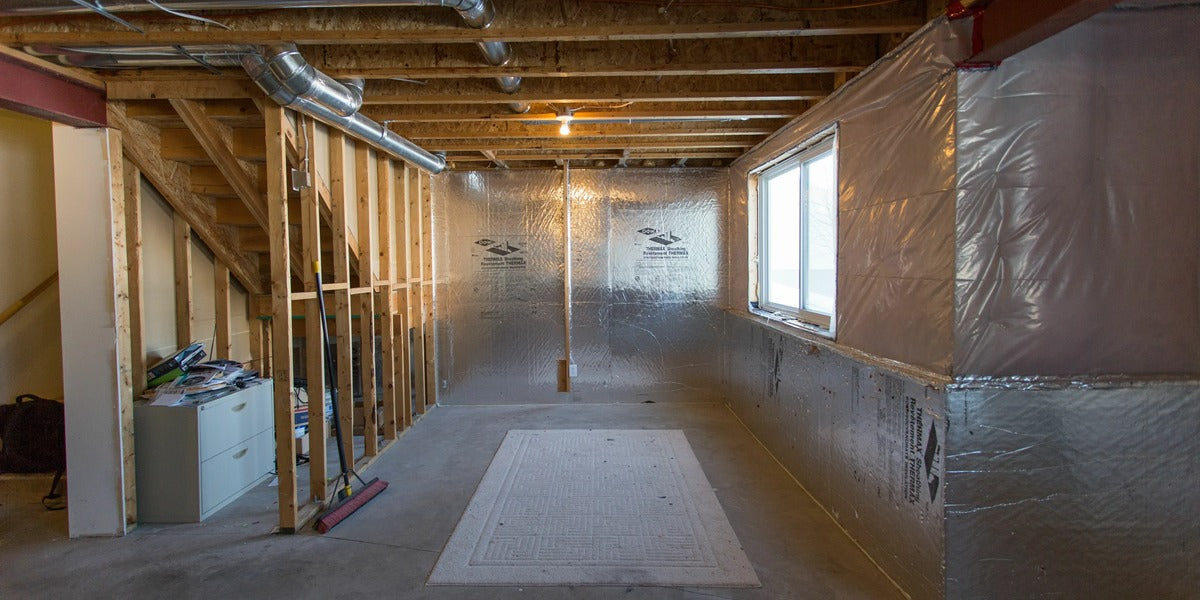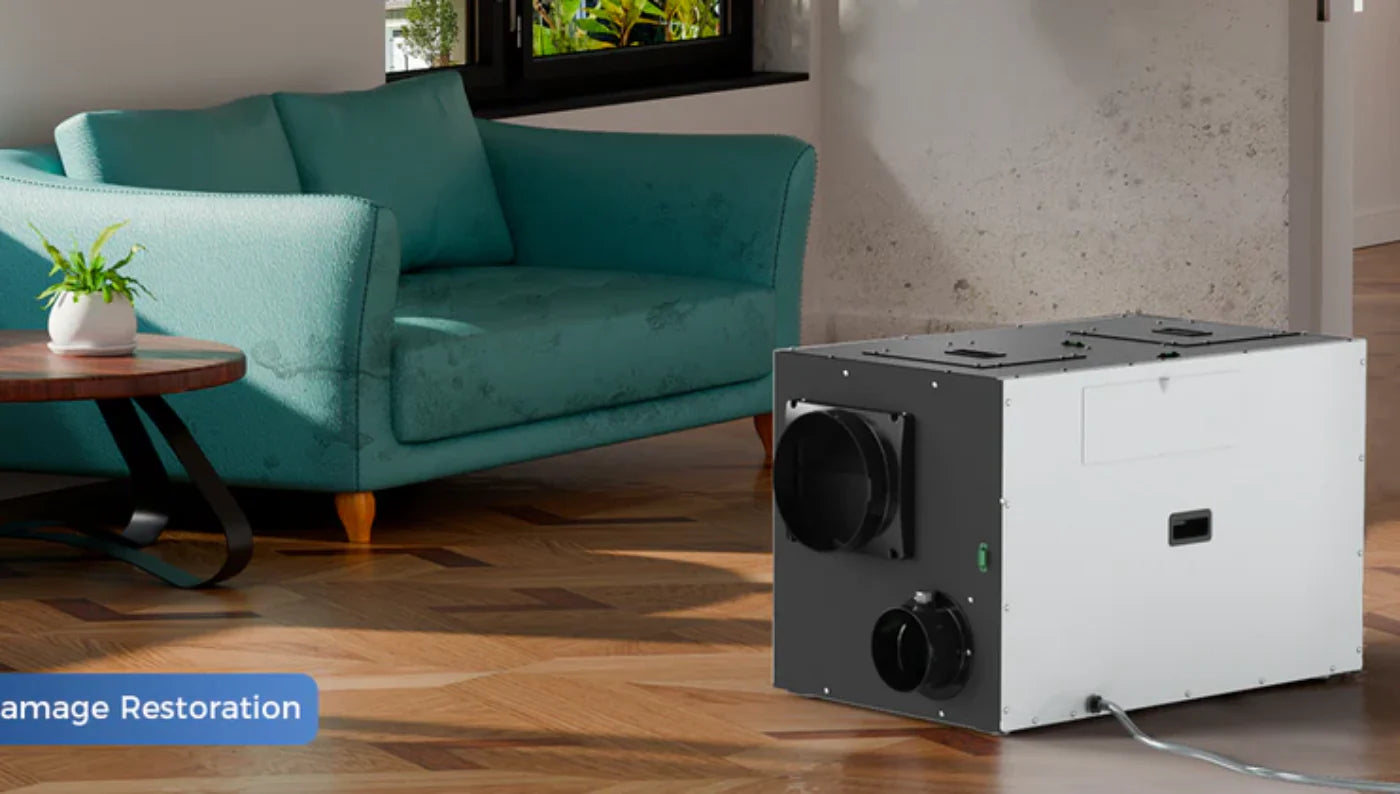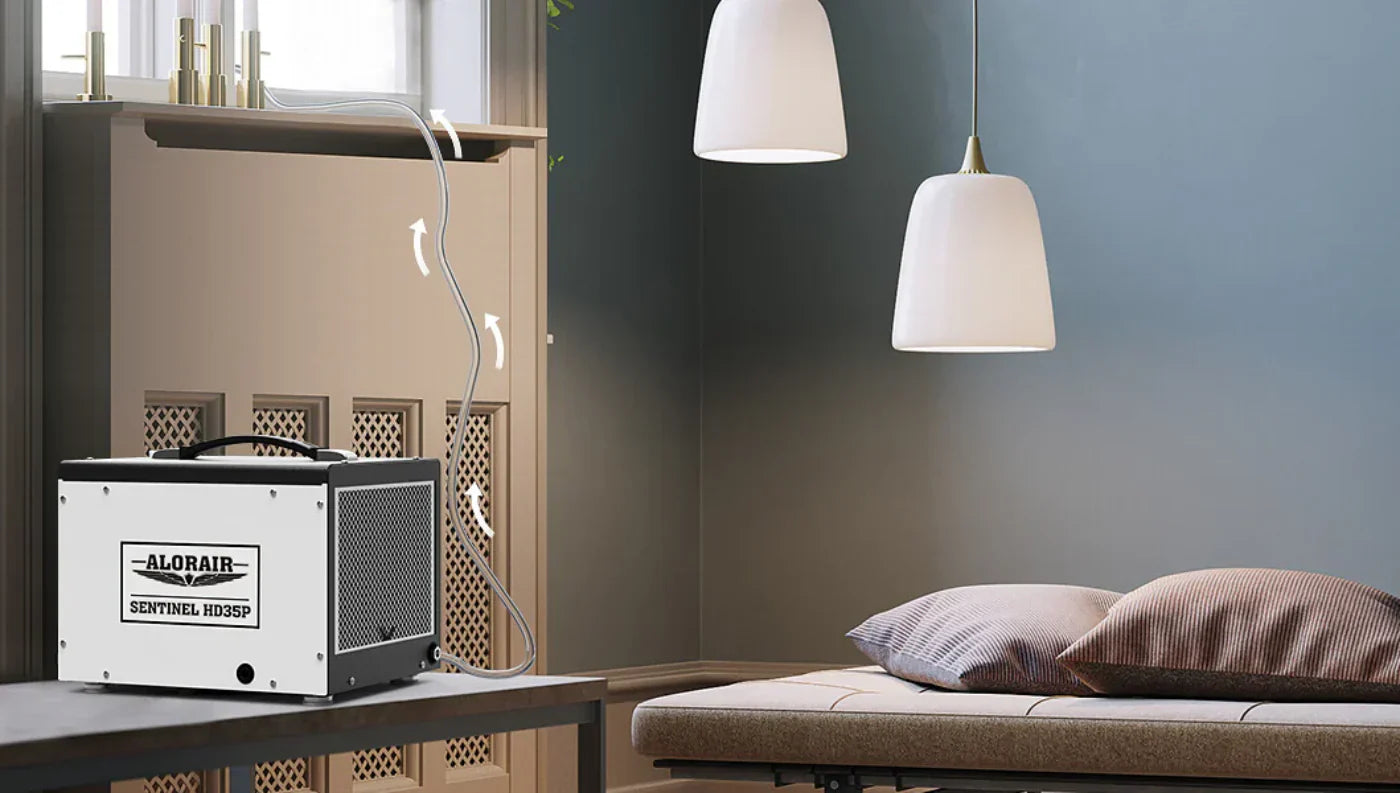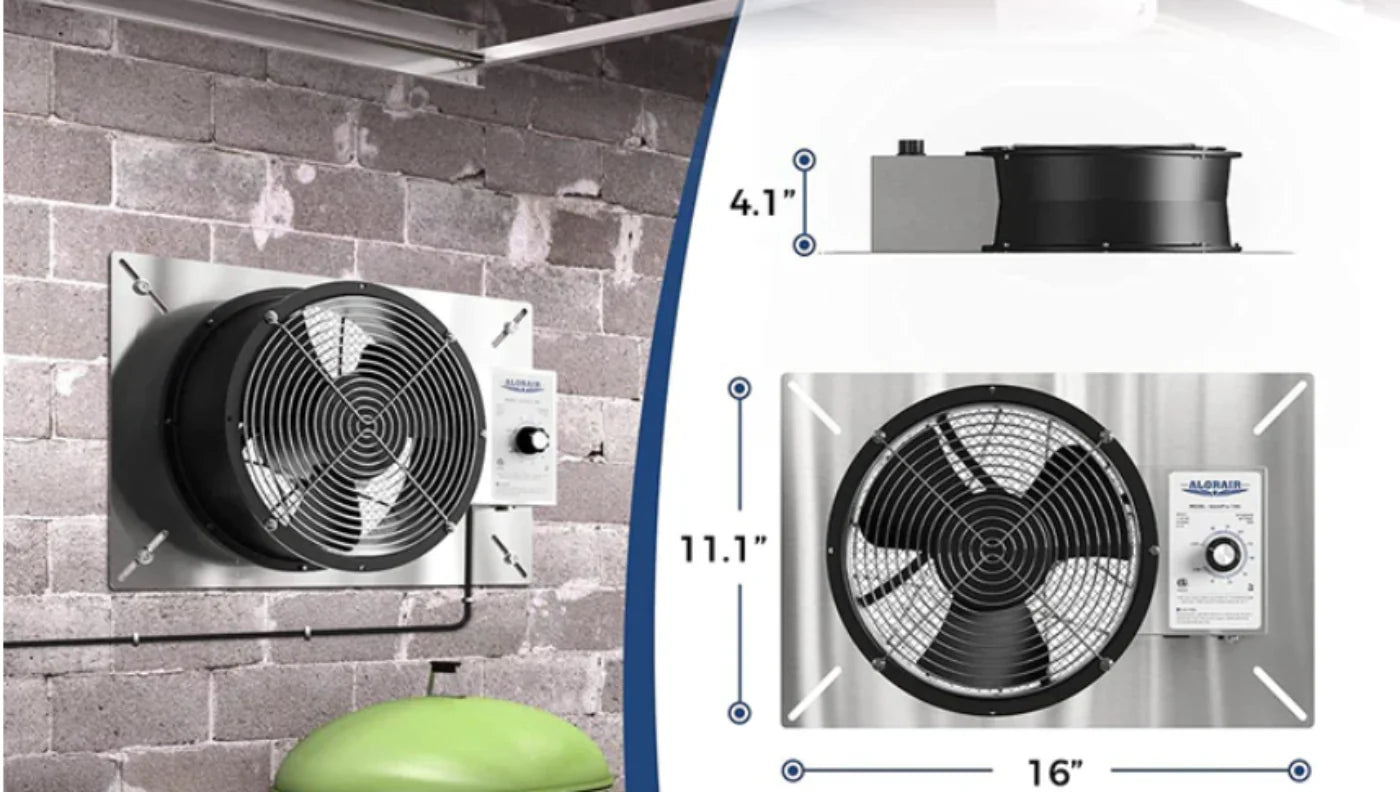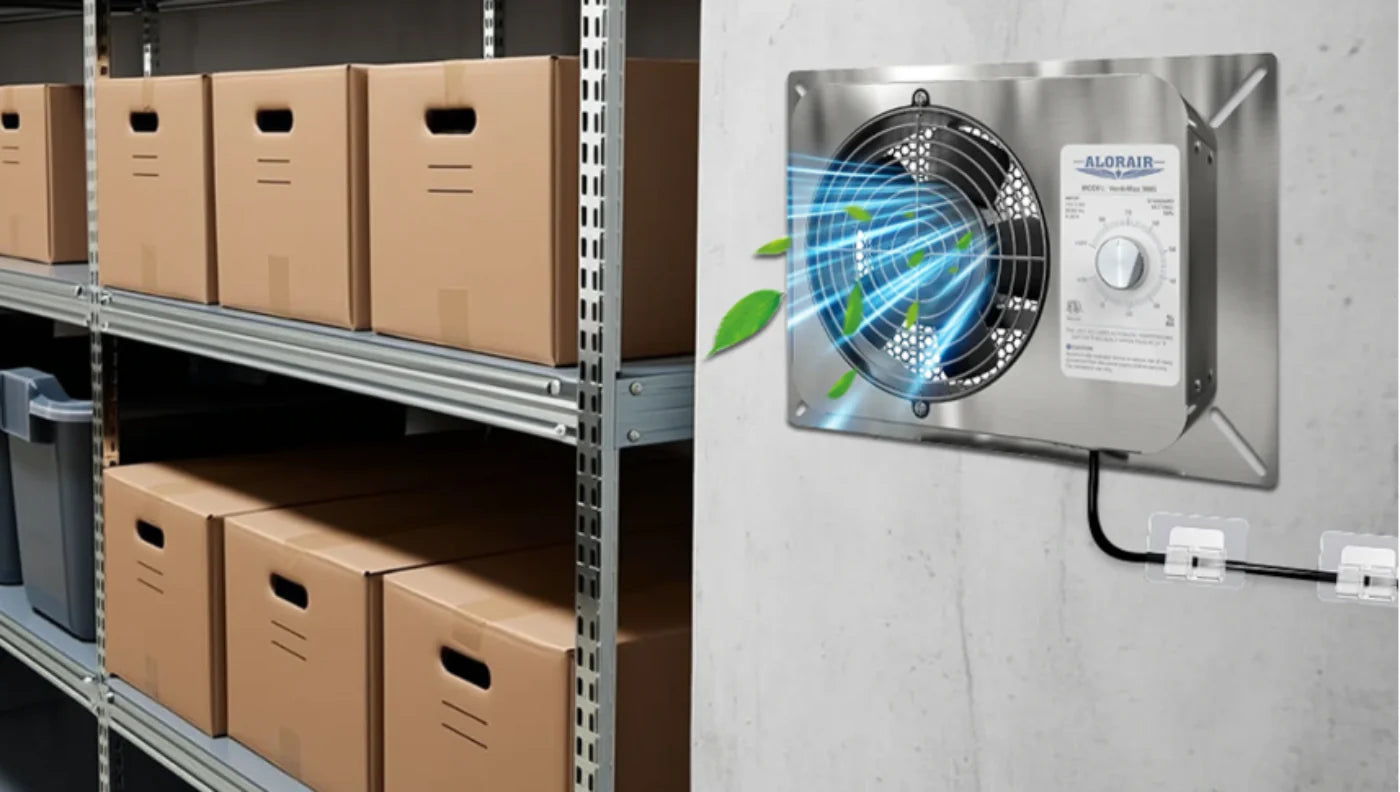Are “Muggy, damp air, and stinky” the words that describe your basement situation? Then you must be worried and looking to get rid of this. Well, don’t worry you’re not the only one going through this. People usually witness a humid basement in summer. A dry basement is essential for maintaining a healthy and comfortable home environment. Basements are notorious for moisture issues, which can lead to mold growth, structural damage, and a generally unpleasant living space. While dehumidifiers are a popular solution, there are effective ways to tackle a humid basement in summer without relying on these devices. In this blog, we'll explore various methods on how to keep the basement dry without a dehumidifier, ensuring a pleasant and moisture-free space throughout the year.
What are the Causes of Basement Humidity?
To effectively address a humid basement in summer, it’s crucial to understand why basements are prone to moisture. Several factors contribute to this issue, and identifying these sources is the first step toward a dry basement.
Common Sources of Basement Humidity
Groundwater Seepage: Water from the surrounding soil can seep through the foundation walls and floor, especially after heavy rainfall or if the water table is high.
Leaks: Plumbing leaks, roof leaks, and other types of water ingress can significantly contribute to basement moisture.
Poor Ventilation: Lack of adequate airflow can trap moisture in the basement, exacerbating humidity issues.
Importance of Addressing Humidity
Excess moisture in the basement can lead to several problems, including mold growth, musty odors, and even structural damage over time. Mold not only damages property but also poses health risks to the occupants. Therefore, addressing humidity issues is not just about comfort but also about safeguarding your home and health. Addressing the root causes of humidity is vital in how to keep your basement dry without a dehumidifier.
How to Keep Basement Dry Without Dehumidifier
1- Improve Ventilation
One of the simplest and most effective ways to keep your basement dry without a dehumidifier is to improve ventilation through basement ventilation. Proper airflow can significantly reduce moisture levels, preventing a humid basement in summer.
Tips on Enhancing Airflow in the Basement
Open Windows: Whenever the weather permits, open windows to allow fresh air to circulate. This helps to expel moist, stale air and bring in drier air.
Install Exhaust Fans: Place exhaust fans in strategic locations to pull moist air out of the basement. Fans can be installed in windows or through walls to enhance airflow.
Use Vent Covers: Ensure that existing vents are not blocked. Covering vents with filters can help to control dust while still allowing air to flow.
Benefits of Keeping Windows Open
Keeping windows open when the weather is dry helps in natural ventilation. It’s an effective way to reduce humidity levels without relying on electrical appliances. This method is particularly useful in the summer when outdoor air is generally warmer and can hold more moisture, allowing for better evaporation from inside the basement.
2- Seal Cracks and Gaps
Another essential step in how to keep your basement dry without a dehumidifier is sealing any cracks and gaps in the foundation. These openings can be significant entry points for moisture.
Importance of Inspecting and Sealing Foundation Cracks
Regular Inspections: Conduct thorough inspections of the basement walls and floor for any visible cracks or gaps. Small cracks can expand over time, letting in more moisture.
Using Caulking and Sealants: Apply high-quality caulking or sealants to seal these cracks. Products specifically designed for masonry can provide a long-lasting solution.
Maintenance: Regularly check the sealed areas to ensure they remain intact and reapply sealant as needed.
Preventing Water Intrusion
Sealing cracks and gaps prevents water from seeping into the basement, crucial in maintaining a dry environment. This method keeps the basement dry and helps prevent potential structural damage caused by persistent moisture intrusion.
3- Use Moisture-Absorbing Materials
Using moisture-absorbing materials is a passive yet effective method for dehumidifying basements. These materials can naturally absorb excess moisture, helping to maintain a balanced humidity level.
Introduction to Moisture-Absorbing Materials
Silica Gel: Widely used in various applications, silica gel packets can absorb significant amounts of moisture. Place these packets in corners and areas prone to dampness.
Charcoal: Activated charcoal is another excellent moisture absorber. It can be placed in open containers around the basement to help reduce humidity.
Desiccants: Various commercial desiccants are available that can be placed strategically around the basement to absorb moisture.
Strategic Placement
Corners and Low Areas: Place moisture-absorbing materials in the corners and the lowest areas of the basement where moisture tends to accumulate.
Near Windows and Vents: Position these materials near windows and vents to capture any moisture that enters from outside.
Natural Dehumidifying
By using moisture-absorbing materials, you can significantly reduce humidity levels in the basement without the need for electrical dehumidifiers. This method is particularly effective for minor dampness issues and works well in conjunction with other moisture control strategies that play a central role in dehumidifying basements.

4- Install a Vapor Barrier
A vapor barrier is a material used to prevent moisture from penetrating through walls and floors. Installing a vapor barrier can be a highly effective method in how to keep a basement dry without a dehumidifier.
Explanation of Vapor Barriers and Their Benefits
What is a Vapor Barrier?: A vapor barrier is typically made from polyethylene plastic or foil sheets, designed to block moisture from passing through.
Benefits: Installing a vapor barrier helps to significantly reduce the amount of moisture that can seep through basement walls and floors, thus maintaining a dry environment.
Step-by-Step Guide on Installing a Vapor Barrier
1. Prepare the Surface: Clean the basement walls and floor to remove any dirt or debris.
2. Measure and Cut: Measure the areas where the vapor barrier will be installed and cut the material to size.
3. Attach the Barrier: Use strong adhesive or fasteners to attach the vapor barrier to the walls and floor. Ensure that it covers the entire surface with minimal gaps.
4. Seal the Edges: Use waterproof tape to seal the edges and any seams to ensure a complete moisture barrier.
Reducing Moisture Ingress
Installing a vapor barrier is a proactive step to prevent moisture from entering the basement. This method works particularly well in combination with other strategies like improving ventilation and sealing cracks, providing a comprehensive approach to keeping your basement dry.
By following these steps, you can effectively manage and reduce humidity in your basement, even without a dehumidifier. These methods are practical and can be implemented by most homeowners, ensuring a comfortable and dry basement environment throughout the year.
6- Maintain Proper Drainage
Proper drainage is essential to keep your basement dry without a dehumidifier. Ensuring that water is directed away from your home’s foundation can prevent it from seeping into your basement.
Ensuring Gutters and Downspouts Direct Water Away
Clean Gutters Regularly: Make sure your gutters are free of leaves, twigs, and other debris. Clogged gutters can cause water to overflow and pool around the foundation.
Extend Downspouts: Ensure that downspouts extend at least 3-4 feet away from your home. This helps to direct rainwater away from the foundation and reduces the risk of basement flooding.
Tips on Grading the Landscape
Slope the Ground Away: The ground around your home should slope away from the foundation. Aim for a slope of about 1 inch per foot for at least 6 feet. This prevents water from pooling near the foundation.
Use Dense Soil: Use dense, clay-rich soil around the foundation. It helps to repel water rather than allowing it to seep through.
Installing French Drains or Sump Pumps
French Drains: Install French drains around your home to collect and divert water away from the foundation. This system involves a trench filled with gravel and a perforated pipe to channel water away.
Sump Pumps: Consider installing a sump pump in the basement to remove any water that accumulates. Sump pumps are particularly useful in areas with high water tables or frequent heavy rains.
How to Keep Basement Dry in Summer
A very common question among masses is ‘how to keep basement dry in summer’? Here’s a comprehensive answer. The summer months present specific challenges for maintaining a dry basement due to increased humidity levels.
Specific Challenges of a Humid Basement in Summer
High Humidity Levels: Summer humidity can cause moisture to seep into the basement, making it feel damp and musty.
Temperature Fluctuations: Warm temperatures can cause condensation on cool basement surfaces, leading to increased moisture levels.
Tips on Managing Increased Humidity Levels During Warmer Months
Use Fans: Place fans in the basement to improve air circulation and reduce moisture. Box fans or oscillating fans can be particularly effective.
Install Vent Covers: Use vent covers to control the amount of humid air entering the basement from outside.
Encouraging Air Circulation and Using Fans to Reduce Moisture
Keep Doors Open: If your basement has doors leading to other parts of the house, keep them open to encourage airflow.
Strategically Place Fans: Position fans in areas where moisture tends to accumulate. Fans can help evaporate moisture and reduce humidity levels.
When to Consider a Dehumidifier?
While the methods discussed can effectively manage basement humidity, there are situations where a dehumidifier becomes necessary.
Signs That Natural Methods Might Not Be Enough
Persistent Dampness: If the basement remains damp despite your best efforts, it may be time to consider a dehumidifier.
Mold Growth: The presence of mold and mildew indicates high humidity levels that need more robust control.
Musty Odors: Persistent musty odors are a sign of excess moisture that may require a dehumidifier.
Benefits of Using a Dehumidifier in Persistent Humidity Conditions
A dehumidifier can provide continuous moisture control, ensuring that your basement remains dry and comfortable. It helps to prevent mold growth, protect belongings, and improve air quality. A dehumidifier is a perfect tool for dehumidifying basements.
The Role Crawl Space Dehumidifiers
For those situations where a dehumidifier is necessary, consider the Crawl Space Dehumidifier from AlorAir. The products are designed to handle high humidity levels efficiently and are ideal for use in basements and crawl spaces. They feature advanced technology for energy-efficient operation, making them a reliable solution for maintaining a dry basement environment.
Conclusion
Keeping your basement dry without a dehumidifier is achievable through a combination of ventilation, sealing, moisture absorption, and proper drainage. By implementing these methods, you can manage humidity levels and create a comfortable living space. However, for persistent humidity issues, considering a dehumidifier like the one from AlorAir can provide an effective solution.
Ready to Take Charge of Your Home’s Comfort and Safety?
Visit AlorAir Crawlspace to explore our range of dehumidifiers and other moisture control products. Ensure your basement remains dry and comfortable with our reliable and efficient solutions. Don’t let humidity compromise your home’s comfort and safety—take action today!


